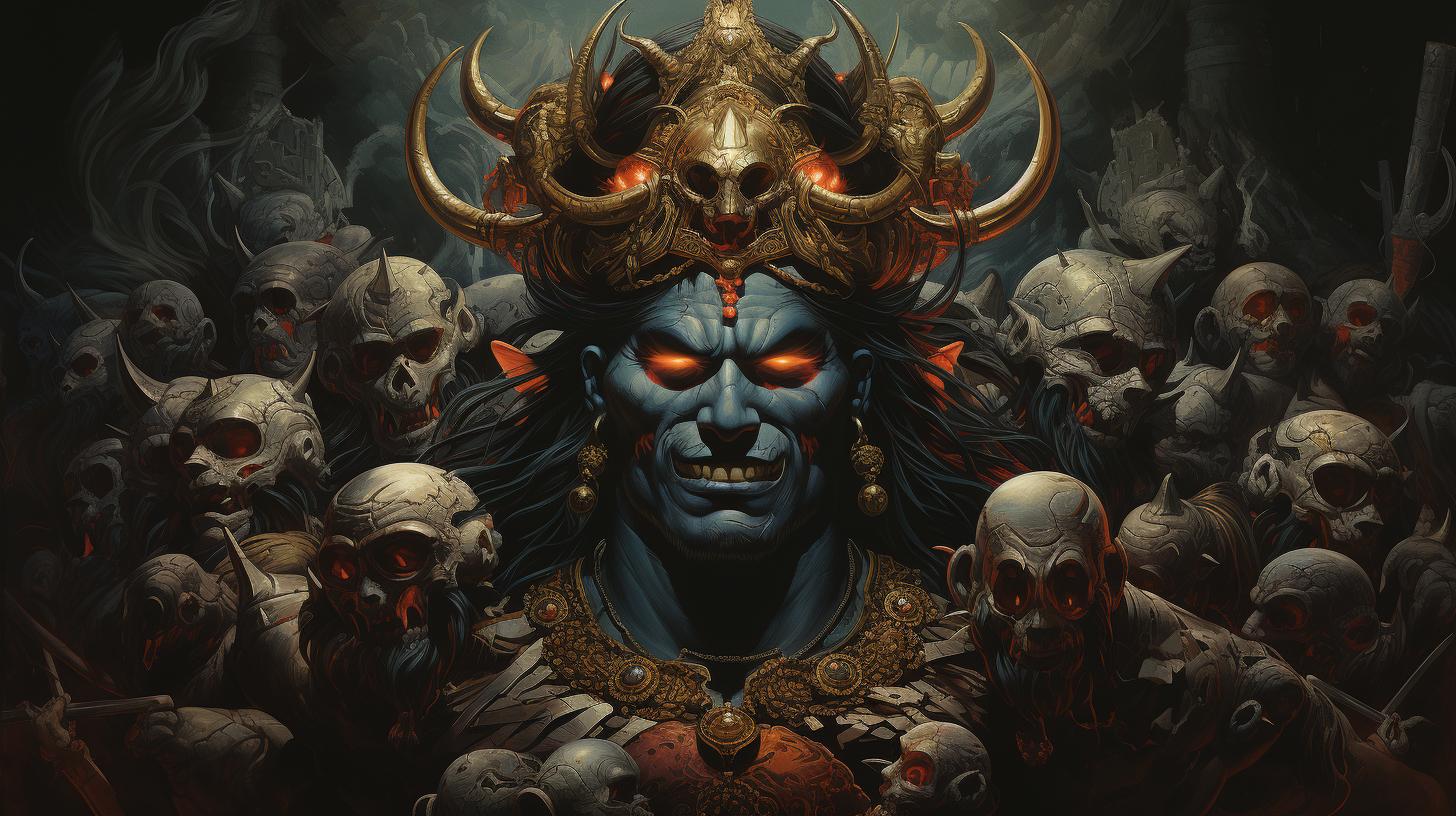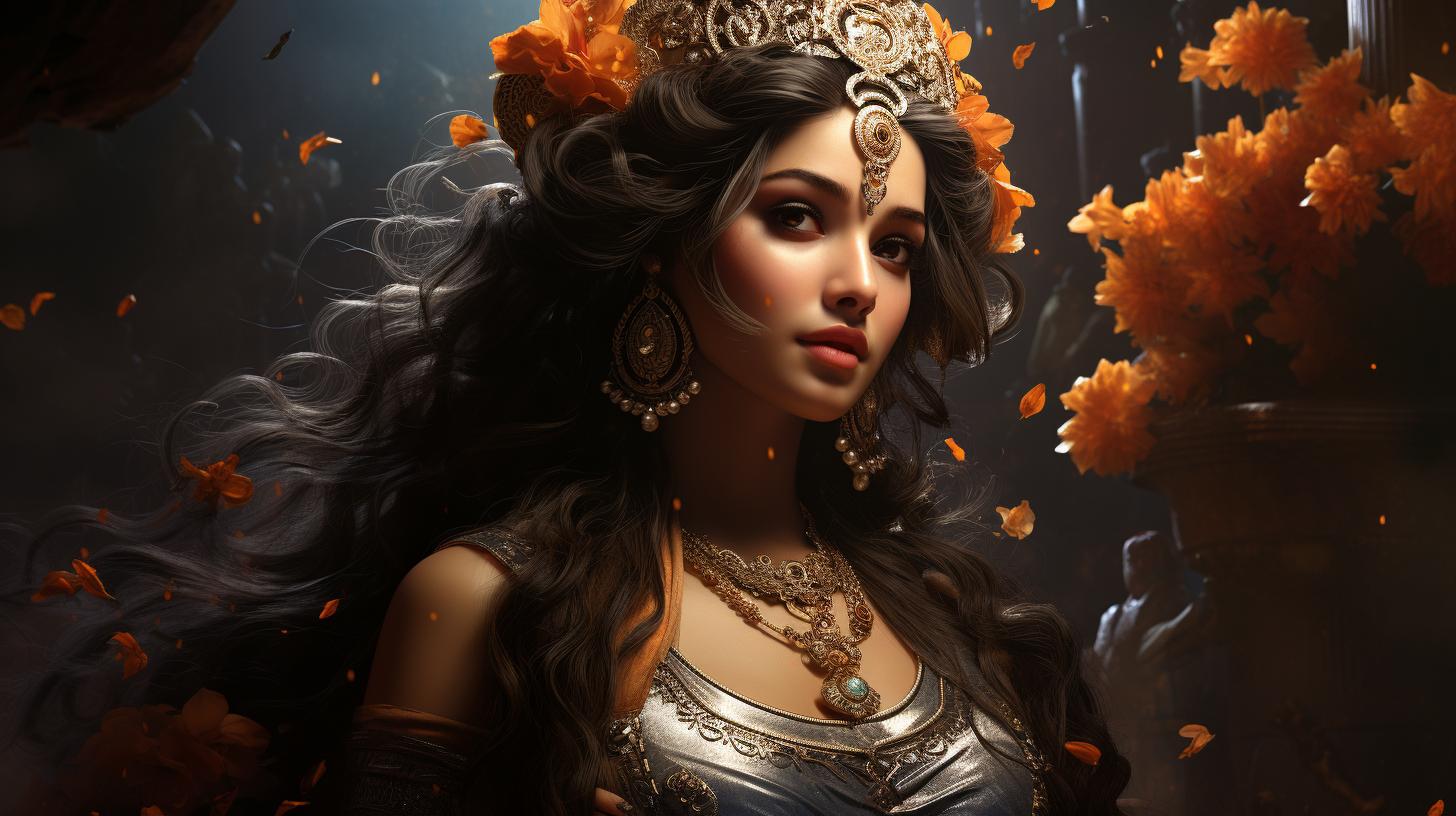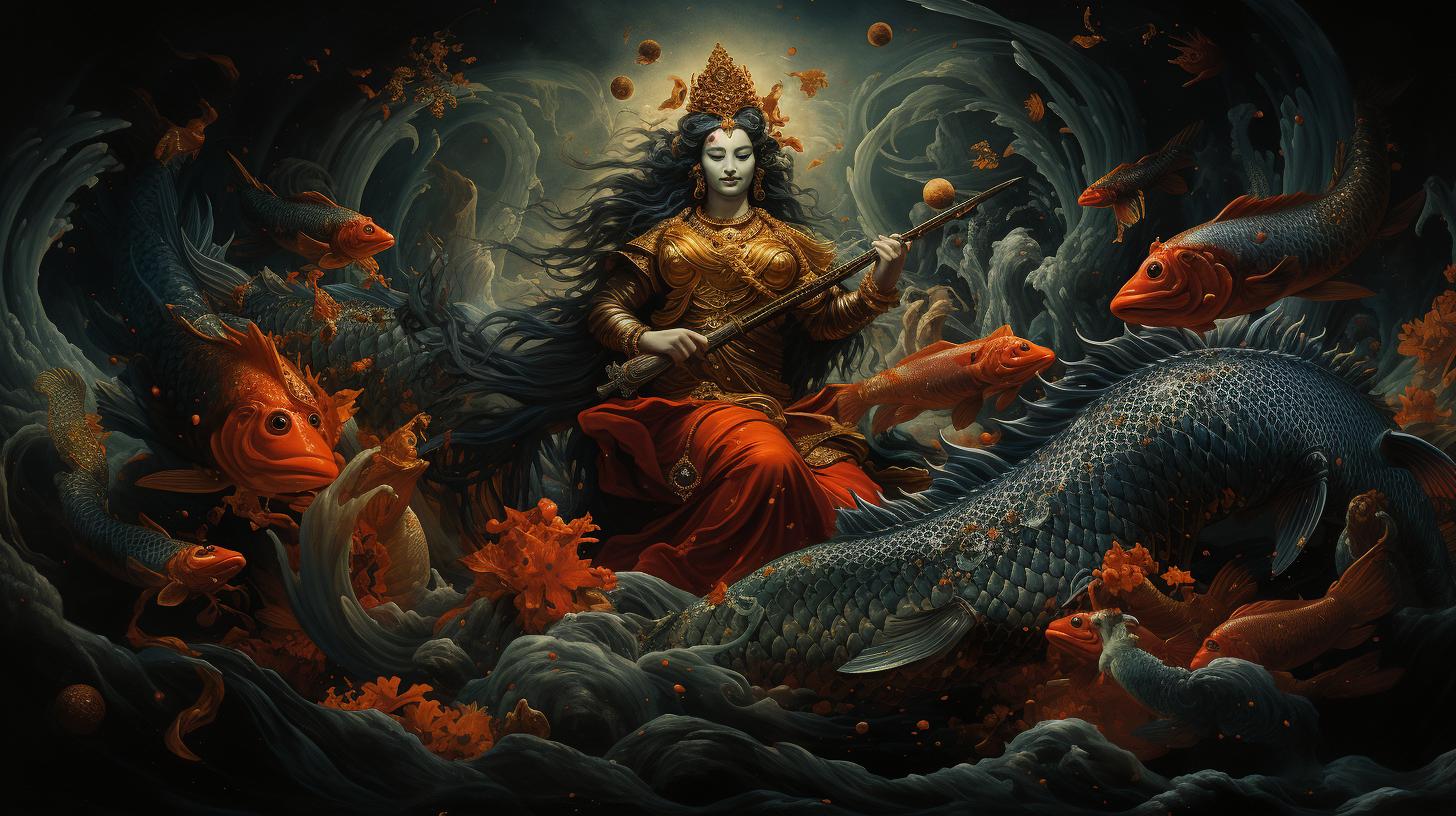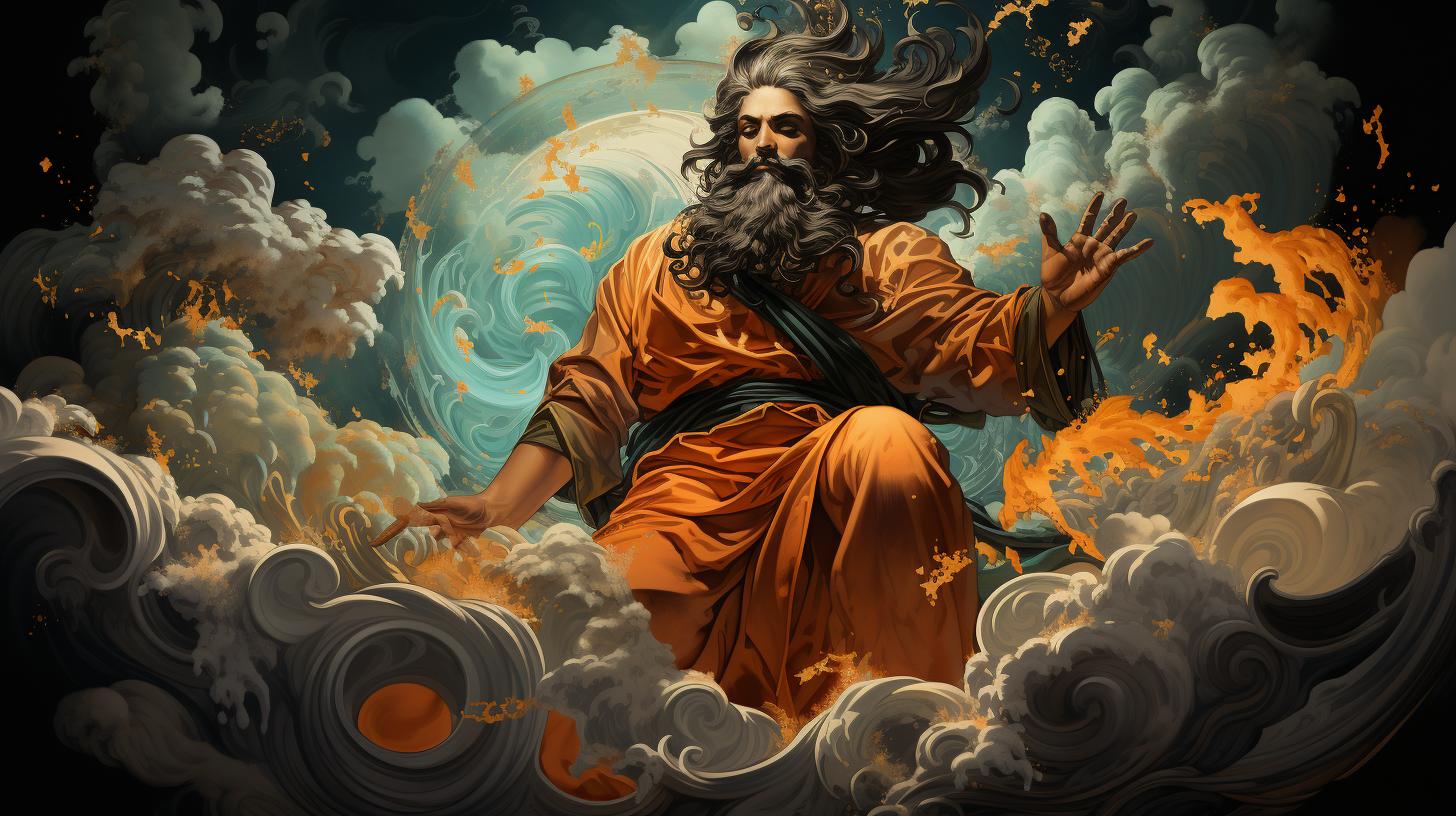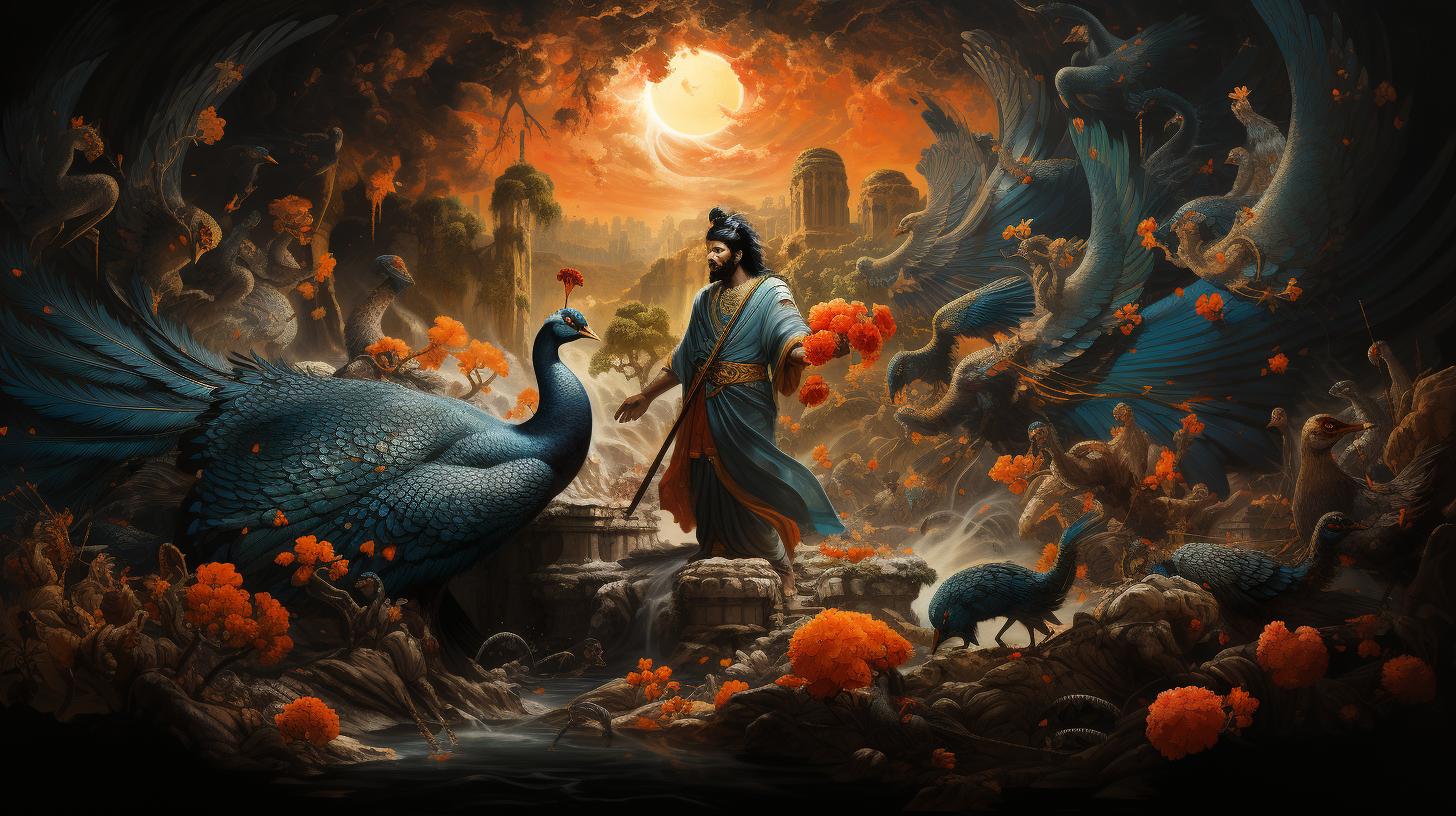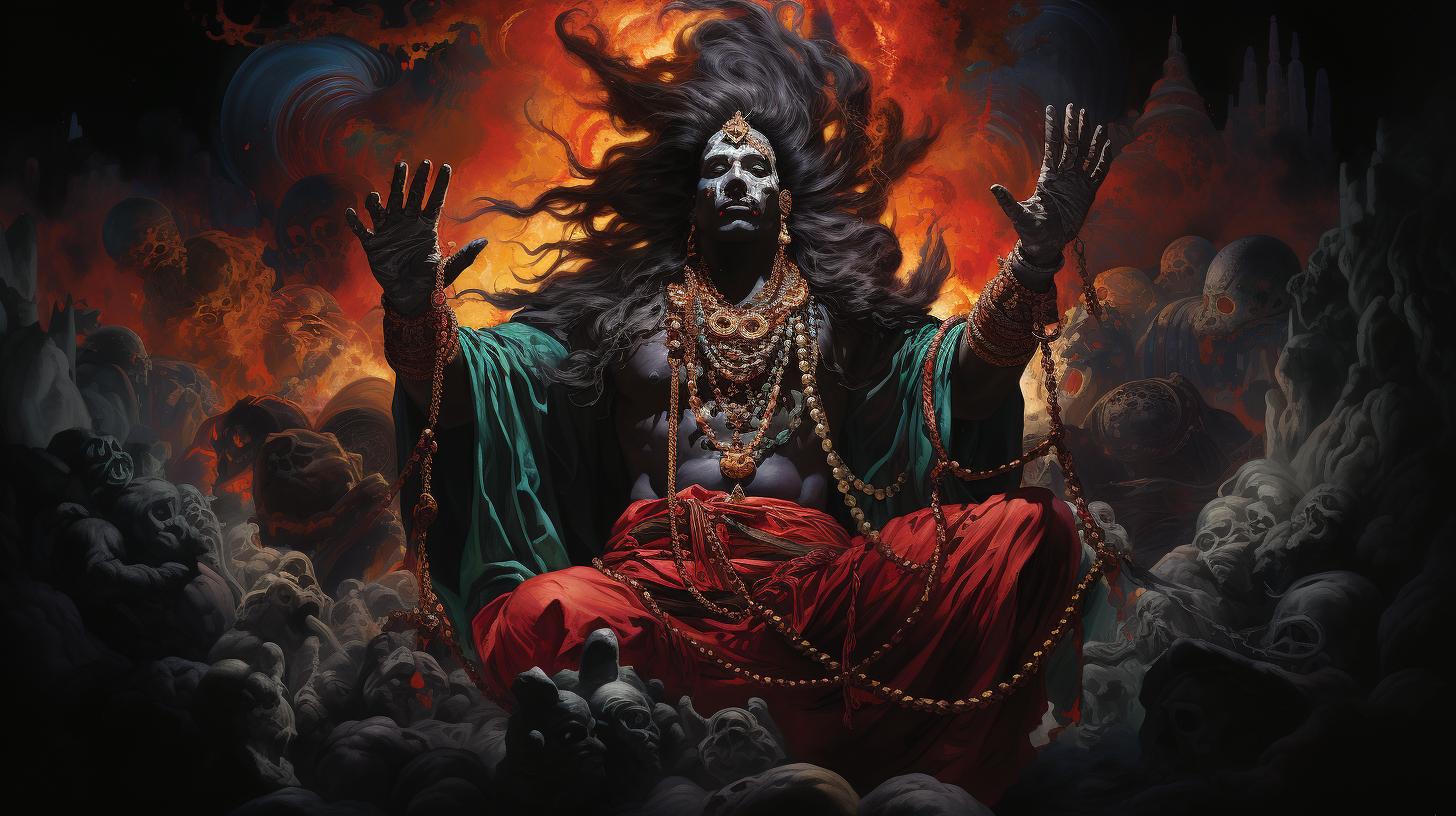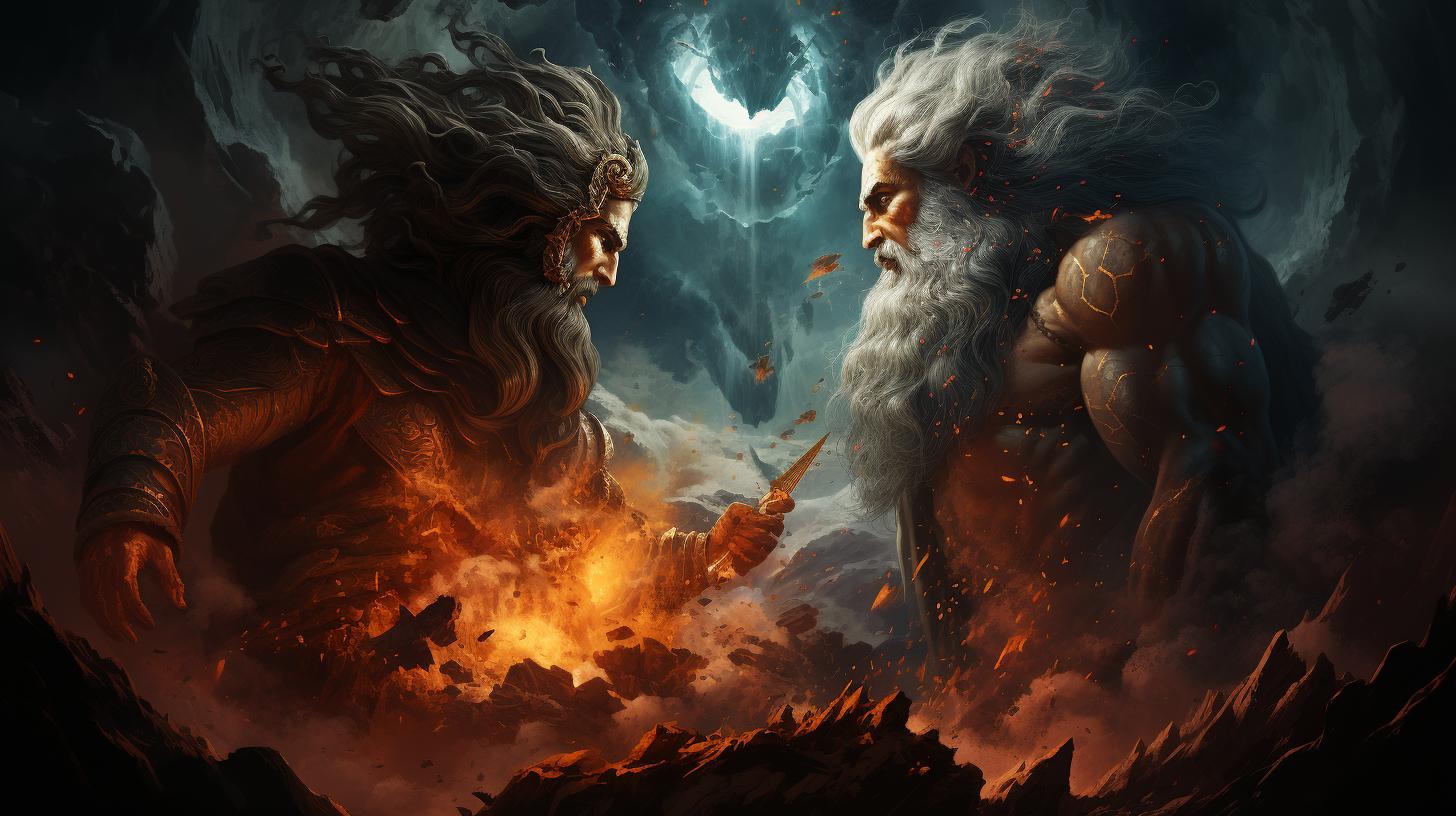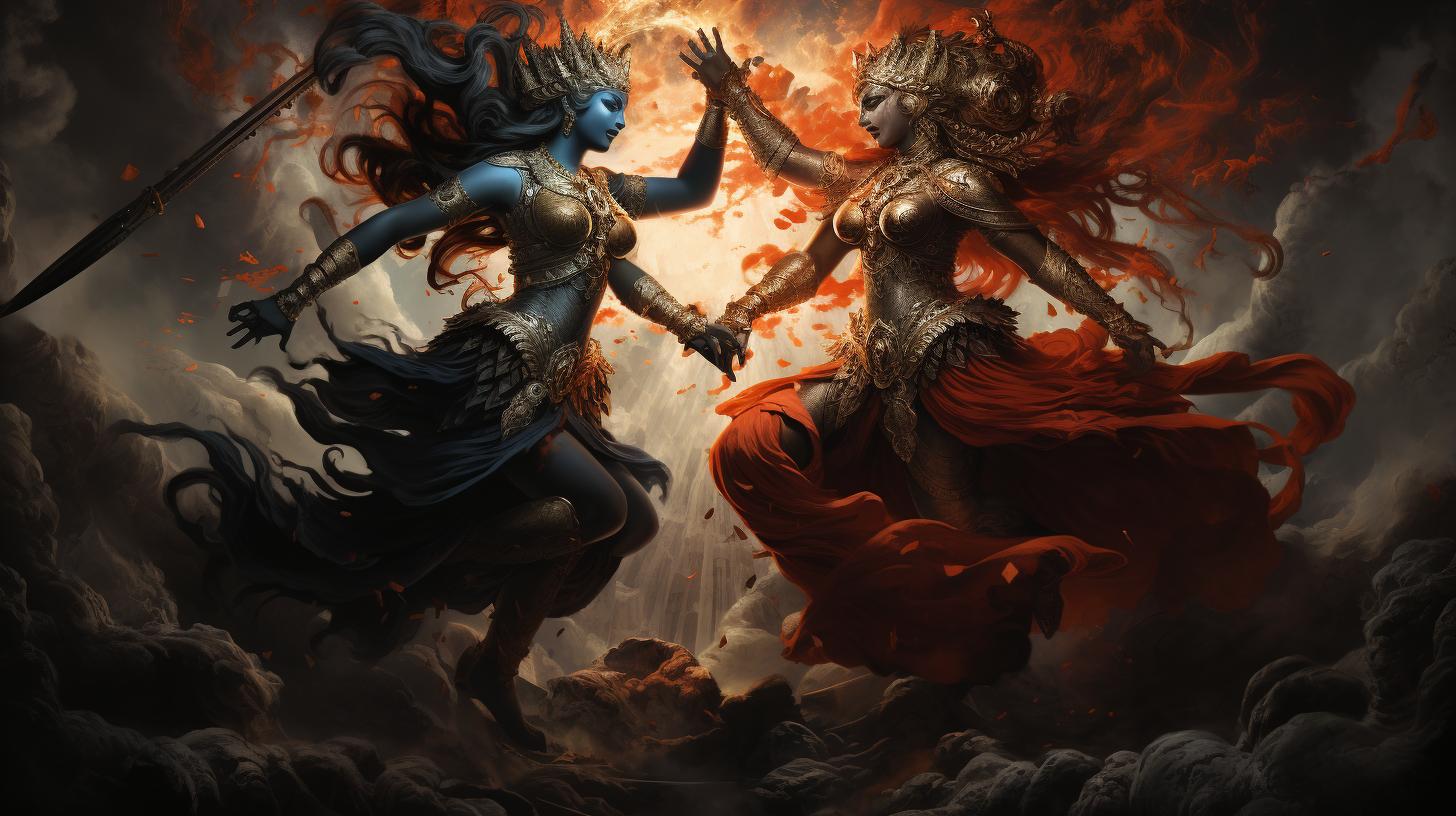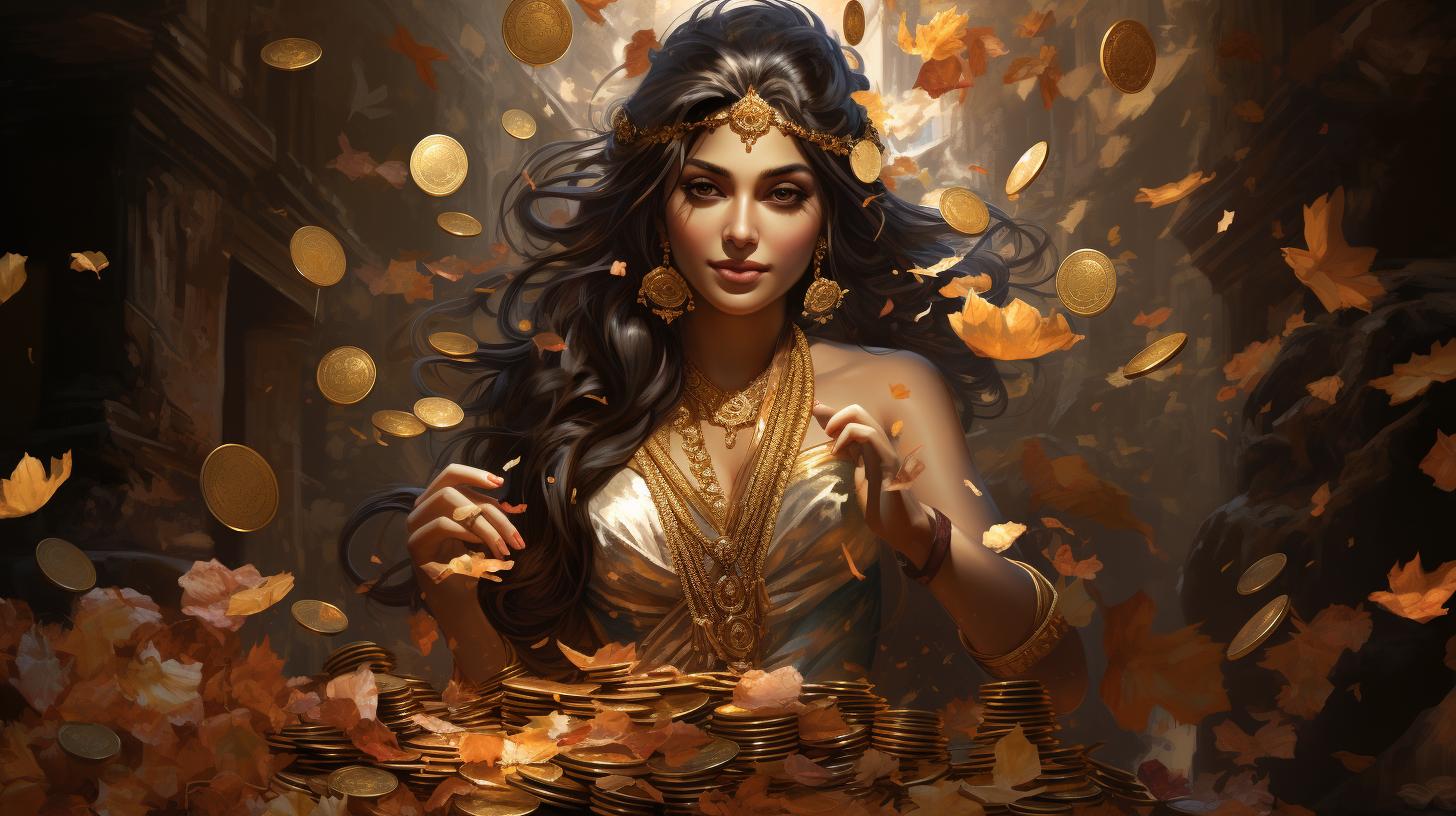Unveiling the Mystery of Hindu God Ravana in Hindu Mythology
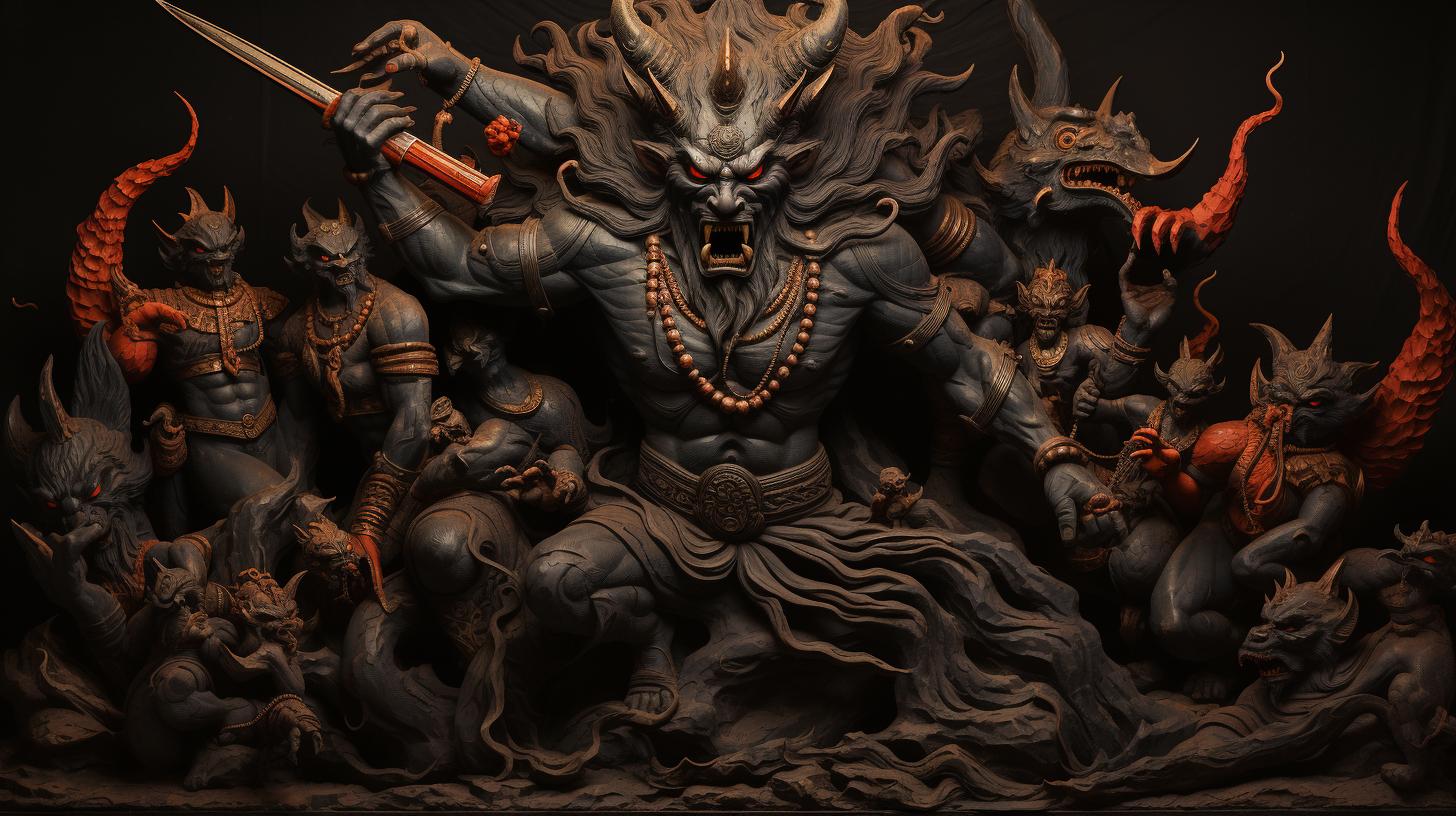
In Hindu mythology, Ravana is the powerful king of demons ruling the fortress island of Lanka. With ten heads, twenty arms, and battle scars, his devotion to Brahma grants him extraordinary powers.
Imprisoned under Mount Kailas by an angry Shiva, Ravana’s release is secured after a thousand years of pleading. His most notable act involves abducting Sita, the wife of semi-divine Rama, leading to epic battles and Rama’s eventual victory.
Ravana is depicted in decorative temple sculptures, and there are temples dedicated to him. His defeat is celebrated in the Ram Lila festival. Ravana holds significant symbolism and remains a subject of cultural resistance and controversy.
Overview of Hindu Mythology
Hindu mythology is a rich tapestry of ancient tales, legends, and epic poems that form the foundation of Hindu religious and cultural beliefs. It encompasses a vast array of deities, heroes, and mythical beings, each with their unique attributes and significance.
These mythological narratives, such as the Ramayana and Mahabharata, provide spiritual guidance, moral lessons, and insights into the human condition.
At the heart of Hindu mythology is a deep reverence for the divine, where gods and goddesses are worshipped as embodiments of cosmic forces and manifestations of higher truths.
These mythological stories not only entertain but also serve as a means to explore fundamental questions about life, morality, and the nature of existence.
Within this rich mythological tradition, one prominent figure stands out: Ravana. His story reverberates throughout Hindu mythology, captivating with its complexity and moral dilemmas. Ravana, the King of Demons, holds a pivotal place in Hindu mythology, with his exploits, victories, and ultimate downfall making him a fascinating character to delve into.
In the following sections, we will explore the life, powers, and significance of Ravana in Hindu mythology. We will trace his origins, his role as the ruler of Lanka, his devotion to Brahma, and his encounters with both Shiva and Rama. Additionally, we will examine the symbolism associated with Ravana, his representation in temple sculptures, and the controversies surrounding his glorification in certain cultural contexts.
Introduction to Ravana
Welcome to the intriguing world of Ravana, a central figure in Hindu mythology. In this section, we will delve into his origins, background, appearance, and extraordinary powers. Let us embark on a captivating journey to uncover the mysteries surrounding this mythical character.
Ravana’s story begins with his birth from a union between a sage named Vishrava and Princess Kaikesi. As a descendant of the demon race, he inherited extraordinary strength and intelligence. His lineage drew connections to some of the most powerful figures in Hindu mythology, including the sage Pulastya and the demon king Hiranyakashipu.
From an early age, Ravana displayed exceptional prowess in the field of warfare and spirituality. His unmatched knowledge of scriptures, combined with his physical prowess, set him apart from others. Despite his impressive lineage, he is often portrayed as an ambitious and egoistic character, driven by a thirst for power.
Ravana’s Appearance and Powers
One of the mesmerizing aspects of Ravana is his unique physical appearance. He is depicted with ten heads and twenty arms, signifying his immense power and command over various realms. It is said that he acquired these additional heads and arms through intense penance and devotion to Lord Brahma.
These physical attributes were not merely ornamental; they also facilitated Ravana’s unparalleled skills in combat.
With each arm equipped with a formidable weapon, he could simultaneously engage in multiple battles, making him a formidable foe for any adversary.
But it was not just his physical prowess that made Ravana extraordinary.
His devotion to Lord Brahma bestowed him with invincibility against gods, surpassing their powers. This divine favor, coupled with his unmatched intellect and mastery of mystical arts, made him an indomitable force in the mythological realm.
Now that we have gained a glimpse into the origins, background, appearance, and powers of Ravana, let us proceed to explore his multifaceted role in Hindu mythology. Brace yourself for a captivating journey filled with intriguing tales and epic battles.
Ravana’s Role in Hindu Mythology
Ravana, a central figure in Hindu mythology, holds various significant roles within the ancient tales. As the King of Demons, he wields immense power and authority, ruling over the formidable island of Lanka.
His rule is characterized by both fear and admiration from his demon subjects.
Ravana as the King of Demons
Ravana’s position as the King of Demons establishes him as a formidable and influential figure. His dominion over the demon realm is absolute, and his subjects obey his every command.
Ravana’s reign is marked by his notorious reputation, striking fear into the hearts of both mortals and deities alike.
Lanka, the island fortress ruled by Ravana, becomes an emblem of his strength and authority. The island serves as a testament to his power, protected by impenetrable defenses and enchanted by mystical spells.
With Lanka as his stronghold, Ravana extends his influence far and wide, posing a significant threat to other realms and deities.
Ravana’s Devotion to Brahma
Ravana’s unwavering devotion and penance to Lord Brahma grant him extraordinary powers and abilities. Through his rigorous spiritual practices, he seeks to gain the favor and blessings of the creator deity.
Ravana’s intense devotion not only empowers him but also shapes his character as a complex figure, driven by a deep sense of spirituality.
Ravana’s Encounter with Shiva
Ravana’s interaction with the powerful deity Shiva holds great significance in Hindu mythology. This section explores Ravana’s imprisonment under Mount Kailas and his eventual liberation, showcasing the immense power and influence of both characters.
Ravana’s Imprisonment Under Mount Kailas
Ravana’s arrogance and audacity eventually brought him face to face with the wrath of Shiva. In a fit of anger, Shiva pressed him down beneath the mighty Mount Kailas, a dwelling place of the gods.
This punishment served as a crucial moment in Ravana’s journey, teaching him valuable lessons about humility and respect for divine powers.
Ravana’s Liberation from Mount Kailas
Despite being trapped under the immense weight of Mount Kailas, Ravana’s devotion and penance knew no bounds. For a thousand years, he fervently pleaded for liberation from his predicament. Finally, his unwavering dedication touched the heart of Shiva, who granted him freedom, acknowledging the transformation that Ravana had undergone during his time of captivity.
This encounter between Ravana and Shiva highlights the complex dynamics of the divine and mortal realms in Hindu mythology. It serves as a reminder of the consequences of hubris and the potential for redemption through sincere devotion and penance.
Ravana’s Abduction of Sita
The abduction of Sita, the beloved wife of the semi-divine Rama, marked a significant turning point in the epic saga of Hindu mythology. It led to a series of dramatic events and an epic battle between Ravana, the demon king, and Rama, the righteous hero.
The Epic Battle between Ravana and Rama
The abduction set the stage for a fierce battle that would determine the fate of Sita. Ravana’s audacity in snatching Rama’s wife sparked Rama’s determination to rescue her at any cost.
Armed with his divine bow and arrow, Rama embarked on a quest to Lanka, where Ravana had taken Sita.
Intense Conflict and Heroic Feats
The battle between Ravana and Rama was nothing short of epic. It was a clash of extraordinary powers and superior combat skills. Ravana, with his ten heads and twenty arms, unleashed his demonic strength, while Rama exhibited his divine prowess as an incarnation of Lord Vishnu. Their confrontations were marked by intense duels and awe-inspiring displays of valor.
Rama’s Victory and Defeat of Ravana
Despite Ravana’s ferocity and formidable powers, it was Rama who emerged victorious in the end. With the guidance of Hanuman and the support of his loyal allies, Rama devised a strategic plan to defeat Ravana and rescue Sita from his clutches.
The great battle culminated in Rama shooting a powerful arrow that pierced through Ravana’s heart, bringing an end to the demon king’s tyrannical reign.
The Price of Hubris
Ravana’s downfall serves as a cautionary tale of the consequences of arrogance and hubris. Despite his immense power, his unjust actions and pride ultimately paved the way for his own demise at the hands of Rama. It reinforces the age-old belief that righteousness and moral values triumph over evil and bring about justice.
Ravana’s Death by Rama’s Arrow
The fatal shot delivered by Rama’s arrow resulted in Ravana’s ultimate demise. It was a finale that not only brought justice to Sita but also symbolized the victory of good over evil.
Ravana’s defeat stands as a testament to the power of righteousness and the resilience of the divine forces that protect moral order.
These events, from the abduction to the final defeat of Ravana, form an integral chapter in Hindu mythology.
They depict the triumph of righteousness, the consequences of pride and arrogance, and the unwavering devotion of Rama to rescue his beloved Sita.
Symbolism and Representations of Ravana
In Hindu mythology, Ravana holds significant symbolism and is represented in various ways, including through temple sculptures and dedicated temples. These representations reflect the rich cultural heritage and religious beliefs associated with Ravana’s character.
Ravana in Hindu Temple Sculptures
Hindu temple sculptures often depict Ravana, showcasing his distinctive appearance with ten heads and twenty arms. These intricate carvings not only depict his physical characteristics but also capture his powerful presence and larger-than-life persona.
The sculptures depict Ravana in different poses, highlighting his role as the king of demons and his confrontations with gods and goddesses. They serve as a visual representation of his significance in Hindu mythology and are revered by devotees who visit temples.
Temples Dedicated to Ravana
Temples dedicated to Ravana are scattered across certain regions, attracting both devotees and those interested in exploring Hindu mythology. These temples serve as sacred spaces for worship and reflection, allowing devotees to connect with Ravana on a spiritual level.
While these temples acknowledge Ravana’s complex character, their existence often sparks debates and controversies. Some view these temples as a form of cultural resistance against the perceived domination of North India over the South, while others embrace them as an important part of their religious and historical heritage.
Visiting these temples offers a unique insight into Ravana’s persona and allows individuals to appreciate the diverse interpretations and perspectives surrounding his role in Hindu mythology.
- Encapsulates Ravana’s physical characteristics and powerful presence.
- Highlights his confrontations with gods and goddesses.
- Serves as a visual representation of his significance in Hindu mythology.
- Serve as sacred spaces for worship and reflection.
- Enable devotees to connect with Ravana spiritually.
- Spark debates and controversies about cultural resistance and heritage.
Ravana in the Ramayana Epic
Ravana plays a significant role in the epic Ramayana, a central text in Hindu mythology.
This ancient saga tells the story of Rama, a revered figure believed to be an incarnation of the god Vishnu, and his journey to rescue his beloved wife Sita from Ravana’s clutches.
Ravana’s Significance in the Ramayana
Ravana’s character is portrayed as the epitome of evil and represents the forces of darkness and ego. His abduction of Sita triggers a series of events that propel the epic narrative forward, testing the virtue, courage, and righteousness of Rama and his allies.
Throughout the Ramayana, Ravana’s character serves as a foil to Rama, highlighting the stark contrast between good and evil. Ravana’s immense power, intelligence, and strategic wit make him a formidable adversary, challenging Rama’s abilities as a divine hero.
Ravana’s character also serves as a moral lesson, demonstrating the consequences of unchecked ambition, selfishness, and arrogance. His eventual defeat symbolizes the victory of righteousness, virtue, and the triumph of good over evil.
Celebration of Ravana’s Defeat in Ram Lila Festival
The defeat of Ravana is celebrated with great enthusiasm in the annual Ram Lila Festival. This vibrant and grand event portrays episodes from the Ramayana through elaborately staged plays and reenactments.
During the festival, effigies of Ravana, typically constructed with papier-mâché or other combustible materials, are erected. These effigies represent the evil that must be vanquished, and they are ultimately set ablaze in a spectacular display of Ravana’s defeat.
The burning of the effigies symbolizes the triumph of light over darkness and the victory of good over evil. People gather to witness this symbolic act of righteousness, reinforcing the moral teachings embedded within the Ramayana and celebrating the valor of Rama and the defeat of Ravana.
- Ravana’s character serves as a foil to Rama, highlighting the contrast between good and evil.
- His defeat symbolizes the victory of righteousness and the triumph of good over evil.
- The annual Ram Lila Festival celebrates Ravana’s defeat through grand plays and effigy burnings.
- The burning of effigies symbolizes the triumph of light over darkness and the victory of good.
Glorification and Controversies Surrounding Ravana
In addition to being a central figure in Hindu mythology, Ravana holds different significances and gives rise to controversies in contemporary times.
Let’s explore two key aspects related to the glorification and debates surrounding Ravana.
Tamil Groups’ Cultural Resistance through Ravana
In the southern region of India, particularly among Tamil groups, Ravana is celebrated as a symbol of cultural resistance against the perceived dominance of northern India over the south. Ravana is revered as a heroic figure who fought against the oppression of his people.
Tamil communities highlight Ravana’s valor and strength, considering him as a representation of their historical identity and heritage.
Through theater, literature, and cultural events, Tamil groups celebrate Ravana’s defiance and rebellion, promoting awareness of their distinct cultural identity and striving to preserve their traditions.
These celebrations serve as a reminder of the enduring pride and resilience of the Tamil people.
Hindu American Foundation and Advocacy for Hindu Rights
In the United States, the Hindu American Foundation (HAF) plays a vital role in defending the rights and interests of the Hindu community. Although Ravana is not directly mentioned as a focus of their efforts, the HAF advocates for fair and accurate representation of Hindu deities, narratives, and historic figures, including Ravana, in various forms of media, education, and public discourse.
The HAF strives to combat stereotypes, misconceptions, and cultural appropriation that can marginalize or misrepresent Hinduism and its myths. By promoting a comprehensive understanding of Ravana’s character and the philosophical underpinnings of Hindu mythology, the HAF aims to foster respect and appreciation for the diversity and richness of Hindu traditions in America.
- Tamil groups glorify Ravana as a symbol of cultural resistance and celebrate his defiance against perceived domination by northern India.
- The Hindu American Foundation advocates for fair representation and accurate portrayal of Hindu deities and figures, including Ravana.
- The HAF strives to counter stereotypes and misconceptions about Hinduism, promoting understanding and respect.
By exploring these significant aspects of glorification and controversies surrounding Ravana, we gain insights into the multifaceted interpretations and debates surrounding this complex character in Hindu mythology.
..

